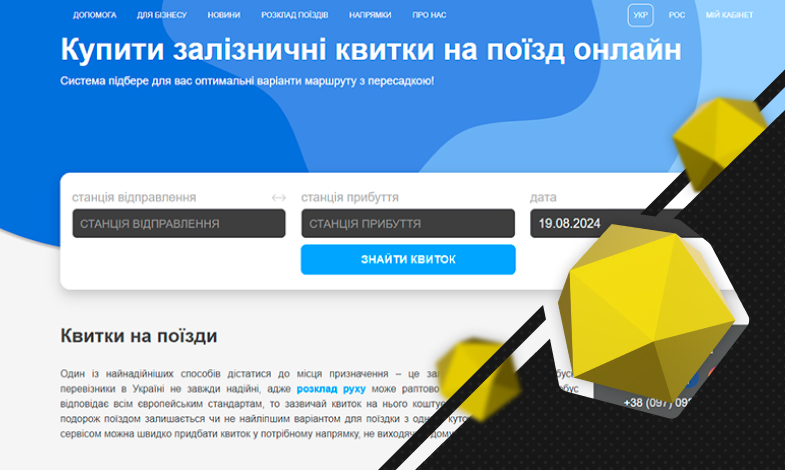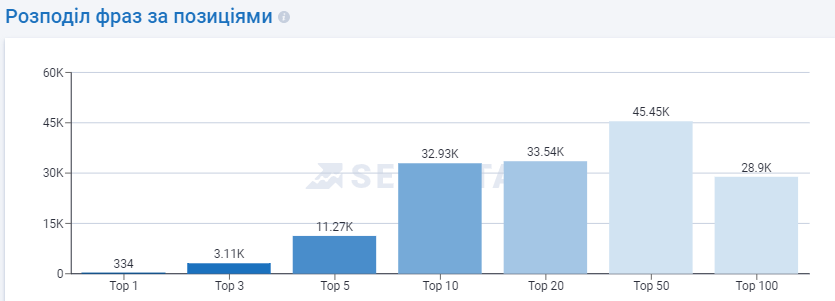Contents of the case

Media

Initial data
Whole works
- /01Analysis of the site for the presence of duplicate pages
- /02Technical site optimization to correct major errors
- /03Mass collection of all potential requests by direction
- /04Expanding the structure according to the collected semantics
- /05Output of a separate group of requests in the TOP-5
- /06Competitors' usability analysis and implementation on the website
Main problems and promotion strategy
The site specializes exclusively in the sale of train tickets, so it is quite inferior to its competitors in terms of the number of pages.
Before starting the work, we already knew the main problem of the site, which did not allow it to grow normally. A huge number of technical duplicates on the site, due to incorrect generation of pages, were discovered. That is, for each route there were 2-3 identical pages with different address templates. But the most difficult nuance was that they were all ranked in the search – pages with one template by one key, others by another, etc. That is, no matter what, it would not be possible to fix it without setbacks.
The main task was to find the least “painful” option for combining duplicate pages under a single template. To do this, we analyzed all these pages and selected the main template to work with. In order to prevent a sudden drop in site positions during reindexing, we worked on the pages, namely: usability and content component. The idea was to simultaneously reduce all duplicates to one relevant page and improve it structurally as much as possible, fill it with optimized content and quickly add them to the search engine index.
The preparation took a lot of time, but it paid off. After the start of work on the site, the period of decline passed almost imperceptibly and the web resource began to grow.
What was done
Semantics
Collecting semantics for a given site is, on the one hand, a fairly simple task, but on the other, it is simply a huge number of key queries to collect manually, and therefore it is a very time-consuming process. Since we needed to optimize a large number of pages in a short period of time, it was decided to collect a semantic core for 25-30 popular directions and only then generate semantics for all other pages using a semi-automatic selection method.
This was enough to make changes to the newly created combined site pages as quickly as possible.
After a quick launch, we gradually collected semantics manually under the most priority areas that were not yet developed and carried out spot optimization on them – writing meta-tags, texts, adding internal linking, etc.
Content
At the initial stage of work, new texts were written for pages in the main priority areas, and texts from old pages that were closed from the index were also transferred. For all other pages, block titles and meta tags were generated to cover all search queries.
In order to optimize the content and write SEO texts, the texts on the competitor’s pages, their structure, density and occurrence of keywords were analyzed. Thus, the structure and formula of the ideal text for the niche was formed, according to which most of the texts for the client’s site were written.
After the main optimization of the site, the content on the pages was constantly updated due to spot work with semantics and writing texts for relevant keywords for each landing page on the site.
Expanding the structure
As indicated above, the site had many duplicates that created redundant and poor-quality pages with a cannibalizing effect. Therefore, we set ourselves 2 opposites but necessary tasks:
- Removed a lot of duplicates and condensed the directions pages into a single template.
- Expanding the structure by adding new route pages, which should already have a changed structure and updated content.
Referral profile
After analyzing the link profile of the site and top competitors, we calculated the average ratio of anchor and non-anchor links, article and crowd, follow and nofollow.
For this niche, not only outreach links are necessary. An interesting fact is that the niche has a large number of “organic” crowd links and quite a lot of publications are on forums. Therefore, for the site, most links were placed on forums, and anchor article links were placed only for the most frequent keys. At the same time, we pay special attention to the selection of high-quality donor domains.
Results
| Options | At the beginning of work | After 8 months | Difference |
|---|---|---|---|
| Organic traffic | |||
| Organic traffic | 32.07 | 78.98 | +246% |
| Site visibility | |||
| Site visibility | 58236 | 129953 | +223% |




